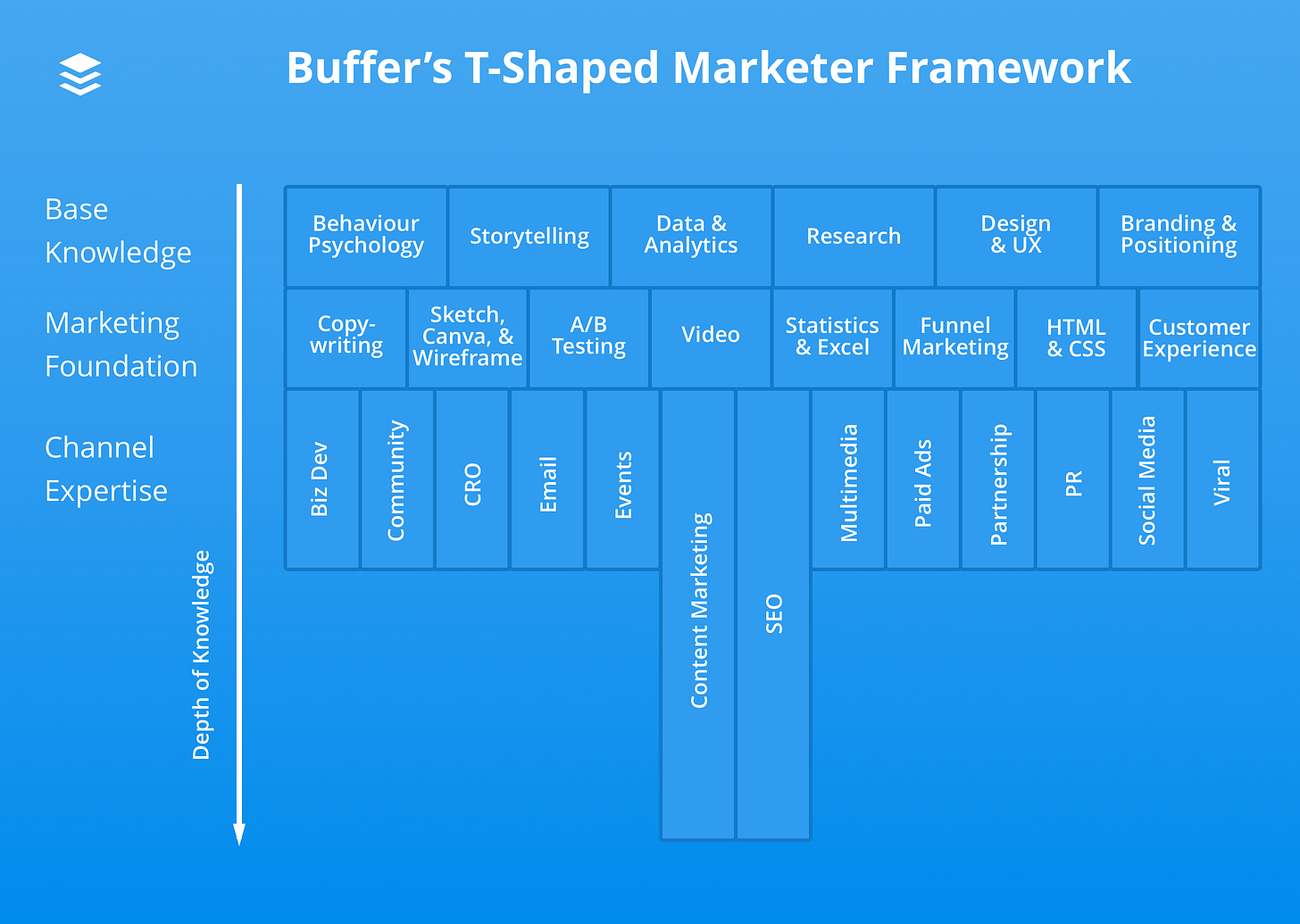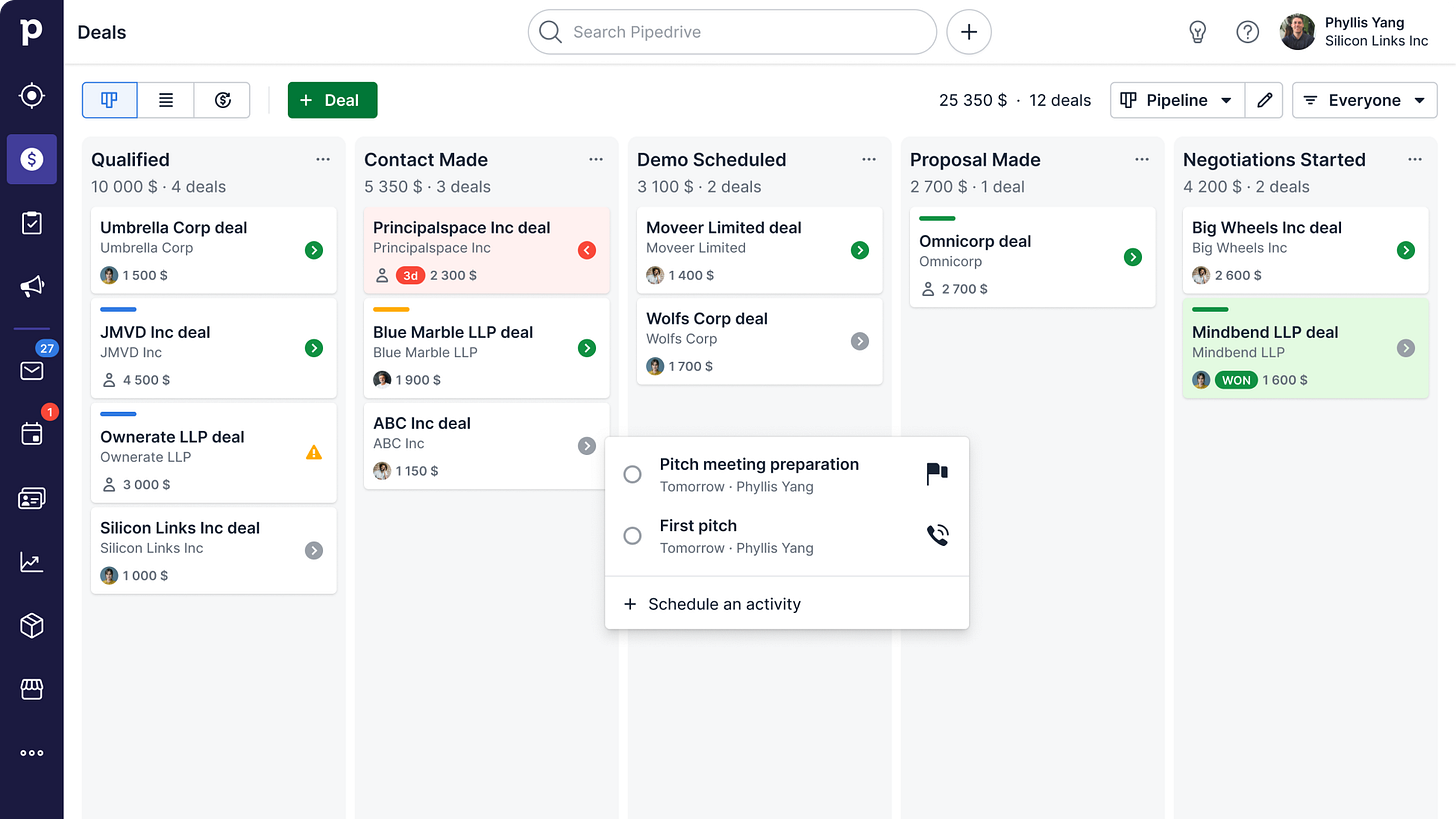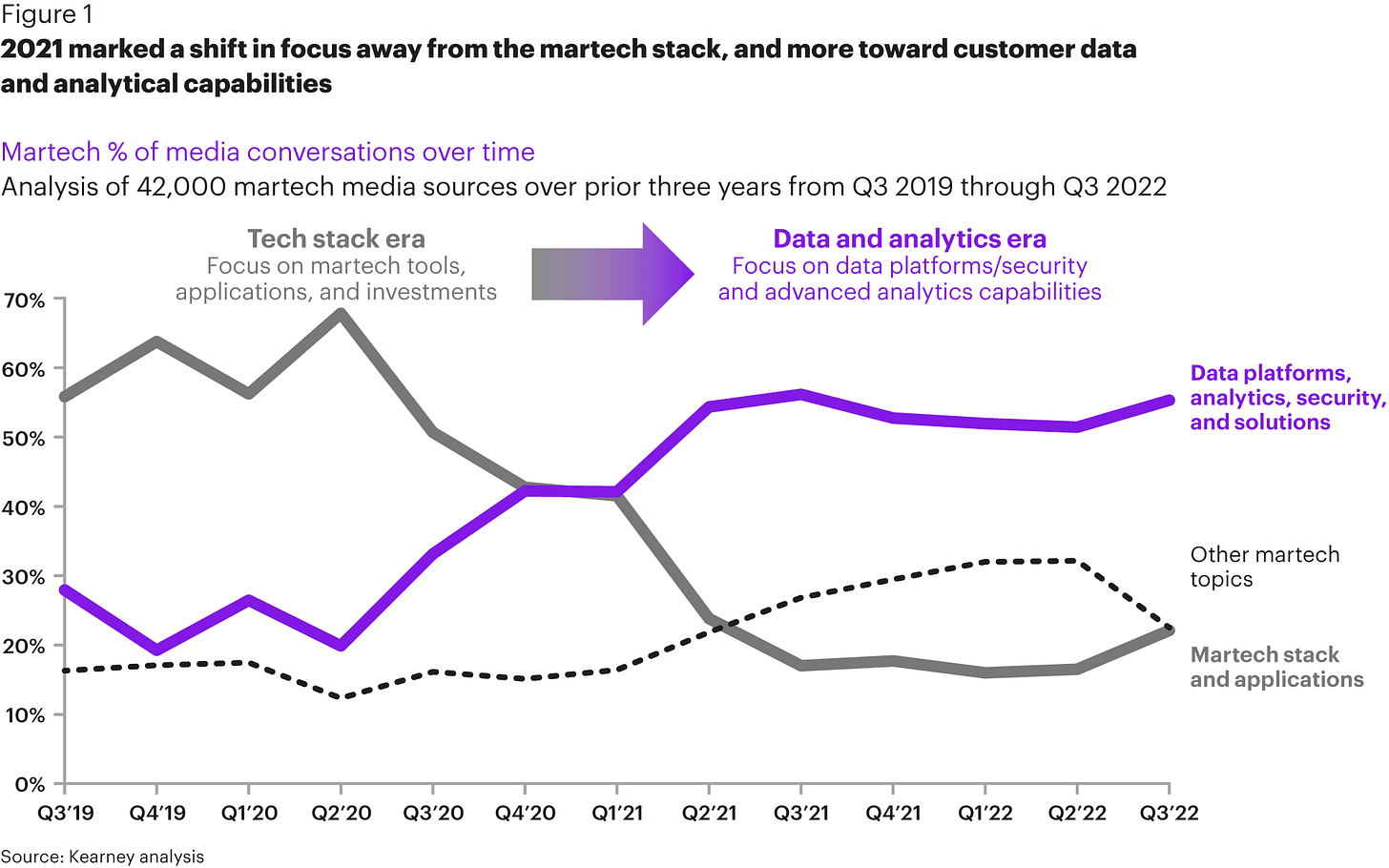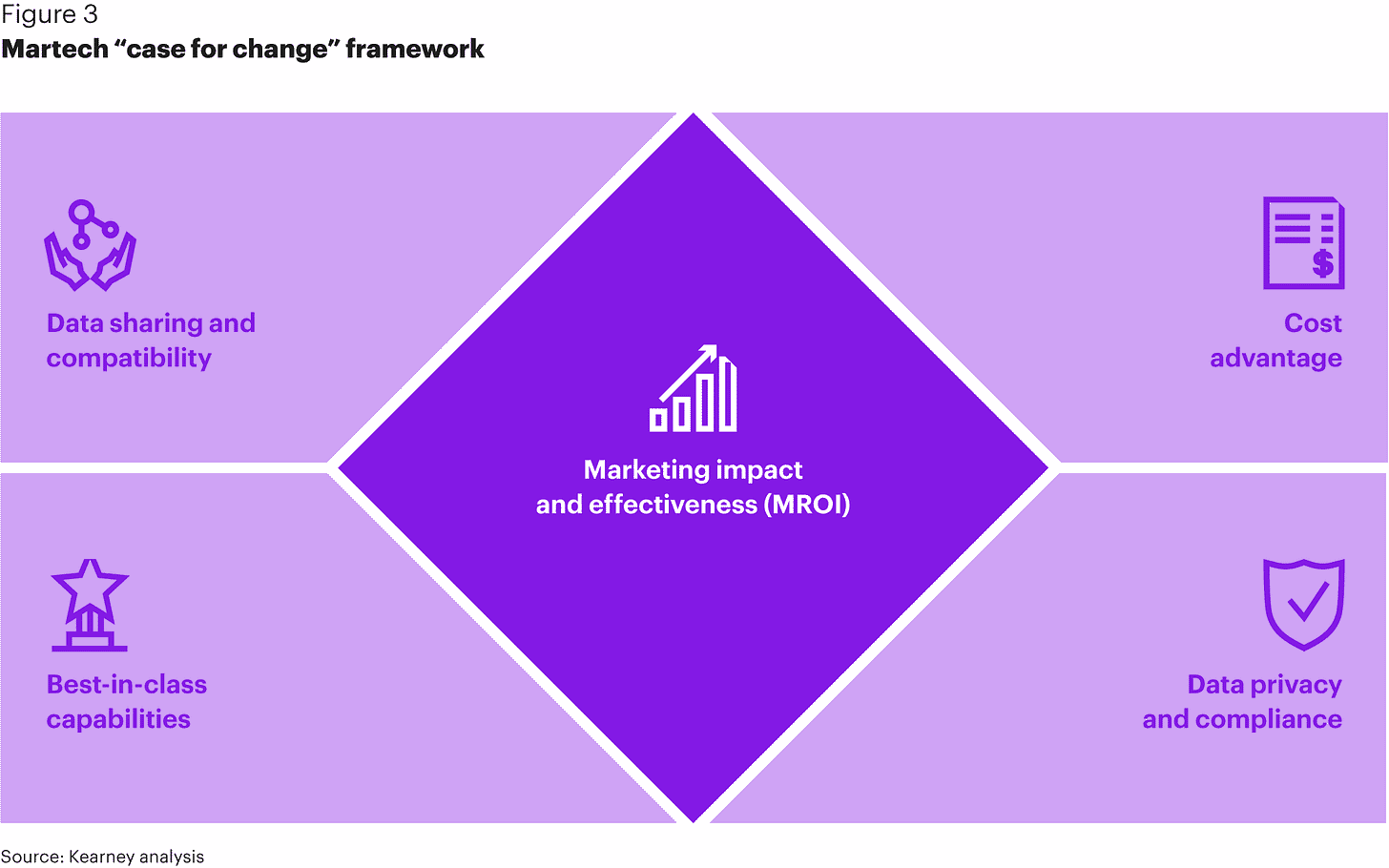MarTech Data Lab | #1 - An Introduction
An introduction, a confession, and martech tools galore
Hi, I’m Sam from the MarTech Data Lab and welcome to my newsletter. I live at the intersection of martech, growth, data, culture, and innovative ideas. Expect a weekly roundup of all things above and much more, always experimenting with trying to bring you the best content out there and a fresh perspective.
I’ve grappled with different versions of what this newsletter could and should be based on my multitude of interests. Started as a different podcast. A potential book. Blog posts. Throughout my career, while starting out as a middle school teacher, never could I have imagined that making a career with marketing and analytics would be a thing. Yet over time, I’ve leaned into different directions and grown as a practitioner. First starting in marketing with social media. Then seeing how data driven the future was going to end up, taught myself digital analytics. Joined a start up and built a marketing and sales team from the ground up, focusing more on demand generation, marketing technology, and product. Back to analytics and going agency side. Next I focused more on experimentation and growth as a manifestation of ‘analytics in action’ and eventually, leaned into product-led growth along with performance marketing. Shifting my focus across the funnel, turning it into growth loops and a more holistic view of what the marriage of marketing and growth can bring.
While evolving into a Full Stack marketer, something funny happened along the way. What became a career so far capitalizing on curiosity and a rapidly changing world (with seismic shifts on both a range of issues), turned into a liability. Riding constant tectonic waves industry shifts and taking risks like I used to do, as marketing demands and one of the reasons I love this field, left me feeling like the current was starting to drift me away further and further from the shore. Instead of saying “Yes, and” I began to say “Well, but” and my identity as a marketer shifted. Was I a ‘data person’ and should I continue to dive deeper on the analytics side of things? Then I better brush up on my AWS, dbt, Kafka, R. Maybe the ops side of things? RevOps, SalesOps, OpsOps? Marketing automation and demand generation? Break out the frameworks and ABM models. The list can (and has) gone on. I would often end up starting down the path of one field, dive in, then be worried I wasn’t leveling up in this new field over there. Or worse. That I was being left behind in that field or specialization I didn’t focus on. Why did I feel this way?
There was (still is?) the concept of the t-shaped marketer that was previously held up as a good model to explain what my growth was. The concept was simple. A broad base of marketing to work from ranging from analytics, performance, project management, and more. Then diving deep in one or two categories for your specialization. It is still a useful framework but for me, that ‘t’ base has become untenable. There is too much breadth and there are endless debates around breath vs. depth. A generalist vs. specialist. A doer vs. a thinker. There are cogent arguments to be made on both sides.

These artificial barriers obscure a reality that is often messier, grayer, and one of the many lessons of what a pandemic has taught us is that things that we thought could never be, are. I think the reality is I was exhausted of feeling like I needed to keep reinventing myself over and over again. Chasing the marketing and the career that I thought I needed to keep doing instead of recognizing the convergent nature of our world. Trying to define and neatly categorize my experiences up to this point. New disciplines and fields are being created each day. Roles are being created that few will have any actual experience in for a while (despite what job postings often proclaim).

This led the the birth of the MarTech Data Lab. Labs are places of experimentation. The lab will bring in the unexpected for stories of inspiration meant to entertain, inform, and hopefully grow that reflects a slice of own mix of interests. Economics as a lens to explain GTM movements and ideals of marketing technology. How science fiction can make us see the humanity and culture necessary to enable digital transformation in both one-person marketing agencies to large enterprises. Lessons from video games and how game mechanics can mirror the levers of growth in B2B organizations.
I won’t always hit the mark and I’ll try to balance the breath and depth required for all marketers these days. Thanks for reading. Let’s get started.
🏗️ 60-Second MarTech: 9,932+ Marketing Tech Tools
At last count (2022) there are about ~10K+ martech tools out there. This introduces you to a tool you may not have heard of, chosen completely randomly from the Martech Map.
What is it?: Pipedrive, “a CRM platform made for salespeople, by salespeople”
What does it do?: An ‘easy-to-use’ CRM with over 250+ integrations that makes it easy to automate most sales-focused tasks and has a visual approach to the sales-funnel, making it easy to see potential incoming sales revenue. Better for sales teams.
Why would I need it?: A CRM, customer-relationship management tool can often form the core of a marketing and sales-team leads, enabling them to keep in touch with their current and future customers. However, some CRMs are too time consuming to utilize. With bad data or inputs, the efficacy of CRMs can decline away from its goal. Pipedrive is focused on easy-set up and clearly defined stages that can adapt to most sales-teams needs across different industries and with a clear focus on ease of use. It can offer the key features of much larger CRM, but with easier set-up and additional tools and functionality, such as email marketing and automation, when sales-teams are ready to level up. It integrates into a wide variety of the most commonly used tools for easier data flow between platforms.
How much could it cost?: $15-$99 per user/per month, depending on features needed
📚 Marketing Research
Connecting the academic world with the practical, this section picks finds an interesting research study and connects it to real world applications
Title of the Study: Top Challenges from the first Practical Online Controlled Experiments Summit, 2019 | Link
‘Tweet’ Summary: 13 of the top ‘experimenting’ organizations came together to identify common challenges from over 100K+ experiments. Some of the largest issues involve trustworthy analysis, data quality, and building a strong scaleable testing culture:
Analysis: “Individual metrics and segments can have data quality issues, delays or be computationally expensive. To resolve these issues, companies segment metrics in various ways. Having ‘tiers’ or metrics so that high-tier metrics are prioritized and thoroughly tested is a way to consume reliable experiment results.”
Data Quality: “There are many interesting and challenging open questions for results analysis…While most experiments in the industry run for 2 weeks or less, we are really interested in detecting the long-term effect of a change. How do long-term effects differ from short-term outcomes?”
Culture: “Culture is the tacit social order of an organization. It shapes attitudes and behaviors in wide-ranging and durable ways…Cultural change involves transformation of an organization through multiple phases. There may be hubris at first, where every idea of the team is considered a winner. Then there may be introduction of some skepticism as the team begins experimentation and its intuition gets challenged. Finally, a culture develops where there is humility about our value judgement of different ideas, and better understanding of the product and customers”
MTDL’s Take:
While these organizations represent the most prolific experimenters running 100s or 1000s of experiments a year across their organization, there are key lessons here that apply to almost all organizations whether they are starting out with their first experiment or have already built some momentum. Just like prioritizing your experiments is a critical step in determining their impact, focusing on using analysis to guide your thinking for ideas, an MVP of trustworthy data quality (nothing stops experimentation momentum faster with executives as mistrust that is hard to bring back), and ensuring your organization is ready for experimentation by measuring the capacity for team members to truly embrace a learning mindset over failure.
🧪 Experimengrowcrotization
Experimentation + Growth + CRO + Optimization + PLG
A shifting martech era … and the case for change
An interesting research report from Kearny from September 2022 analyzed 40K+ martech articles and media reports from the past three years and found the over time, there has been “a shift from the “tech stack era” to a “data and analytics era” focused on customer data and analytics. This new era enables a higher level of marketing personalization across many platforms and sources.”
Not surprisingly and optimistically, hopefully the conversation can continue to evolve away from the tools themselves towards the impact of those tools. With data and analytics being top of mind for CMOs and enabling the foundation for many of the marketing practices that they are being held accountable for, including the opportunities (or need?) of building a cookie-less future, this is definitely aligned with expectations. Kearny continues. “CMOs aren’t just grappling with the sheer number of martech applications. Most organizations fail to utilize even 50 percent of their martech capabilities. Given a lack of data foundation and cross-functional collaboration, it’s estimated that about 40 percent of customer data remains unused.”
“Perhaps more surprising is that 60 percent of CMOs still consider their martech stack incomplete and incapable of supporting their organization’s growth plans.”
Kearny proposes a new “case for change” framework with ROI at the center of the though process of how to think about prioritizing your martech stack build and getting the most out of it:
You can read more about the research report here:
Kearney: A shifting martech era and the case for change
That’s it for V1. Next issue, look forward for more on data & analytics, a weekly news roundup, commentary around economics and marketing, and more.
Keep stackin’ your curiosity,
Sam




